How and why?
AI: A Comprehensive Explanation of Artificial Intelligence
Artificial Intelligence (AI) has rapidly evolved from a theoretical concept to an integral part of our daily lives, transforming industries and redefining capabilities. In recent years, AI technologies have infiltrated numerous sectors, from healthcare and finance to education and transportation, promising greater efficiency and enhanced decision-making. However, while the benefits of AI are significant, so are the challenges and ethical concerns surrounding its implementation. This article delves into the intricacies of AI, exploring its definition, core components, types, real-world applications, and the ethical implications that accompany its rise.
Introduction
The landscape of artificial intelligence is vast and complex, giving rise to both excitement and apprehension about its future. AI refers to the ability of computer systems to carry out tasks that typically require human intelligence, such as learning, reasoning, and problem-solving. As it continues to evolve, understanding the fundamentals of AI becomes crucial not just for technology enthusiasts, but for everyone in an increasingly digital world. This exploration into AI will lay the groundwork for a deeper understanding of its capabilities, limitations, and impact on society.
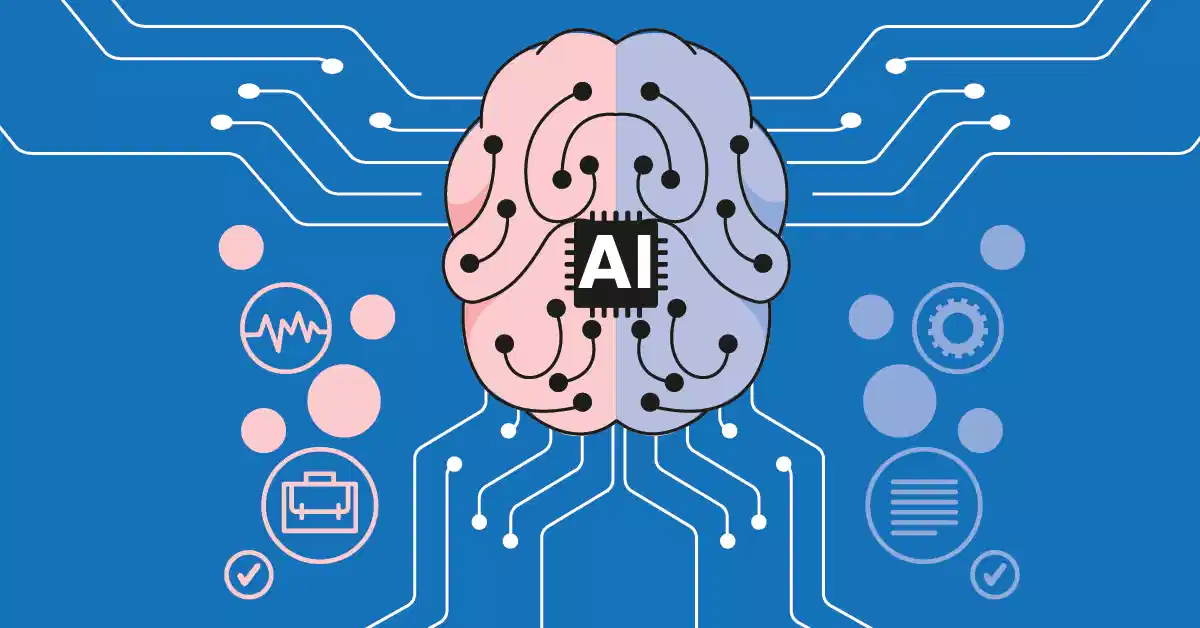
What is AI?
Artificial Intelligence (AI) is often defined as the ability of a machine to mimic intelligent behavior. This encompasses a wide variety of functionalities, such as visual perception, speech recognition, decision-making, and language translation. To better grasp what AI entails, it is essential to consider its components and categories:
- Narrow AI vs. General AI: Narrow AI, or Weak AI, is designed to perform specific tasks (e.g., facial recognition or game playing) and excels within its narrow confines. General AI, on the other hand, aims to emulate human cognitive abilities across multiple domains but remains largely theoretical in practice.
- Subcategories: AI can be further divided into several subsets:
- Machine Learning (ML): This involves algorithms that allow machines to learn from and make predictions based on data, enhancing performance over time.
- Deep Learning: Utilizing large datasets, deep learning employs neural networks to process data similarly to how human brains operate.
- Natural Language Processing (NLP): This focuses on the interaction between computers and humans through language, allowing machines to understand and generate human language.
- Applications: AI’s applications range from healthcare diagnostics where algorithms analyze medical images for conditions such as cancer to financial services, where AI-driven algorithms detect fraud through transactional analysis.
In summary, AI encompasses a broad spectrum of technologies and methodologies that enhance machines’ capabilities, allowing them to handle complex tasks with increased efficiency and accuracy. It is this multifaceted nature of AI that fuels ongoing research and development in the field.
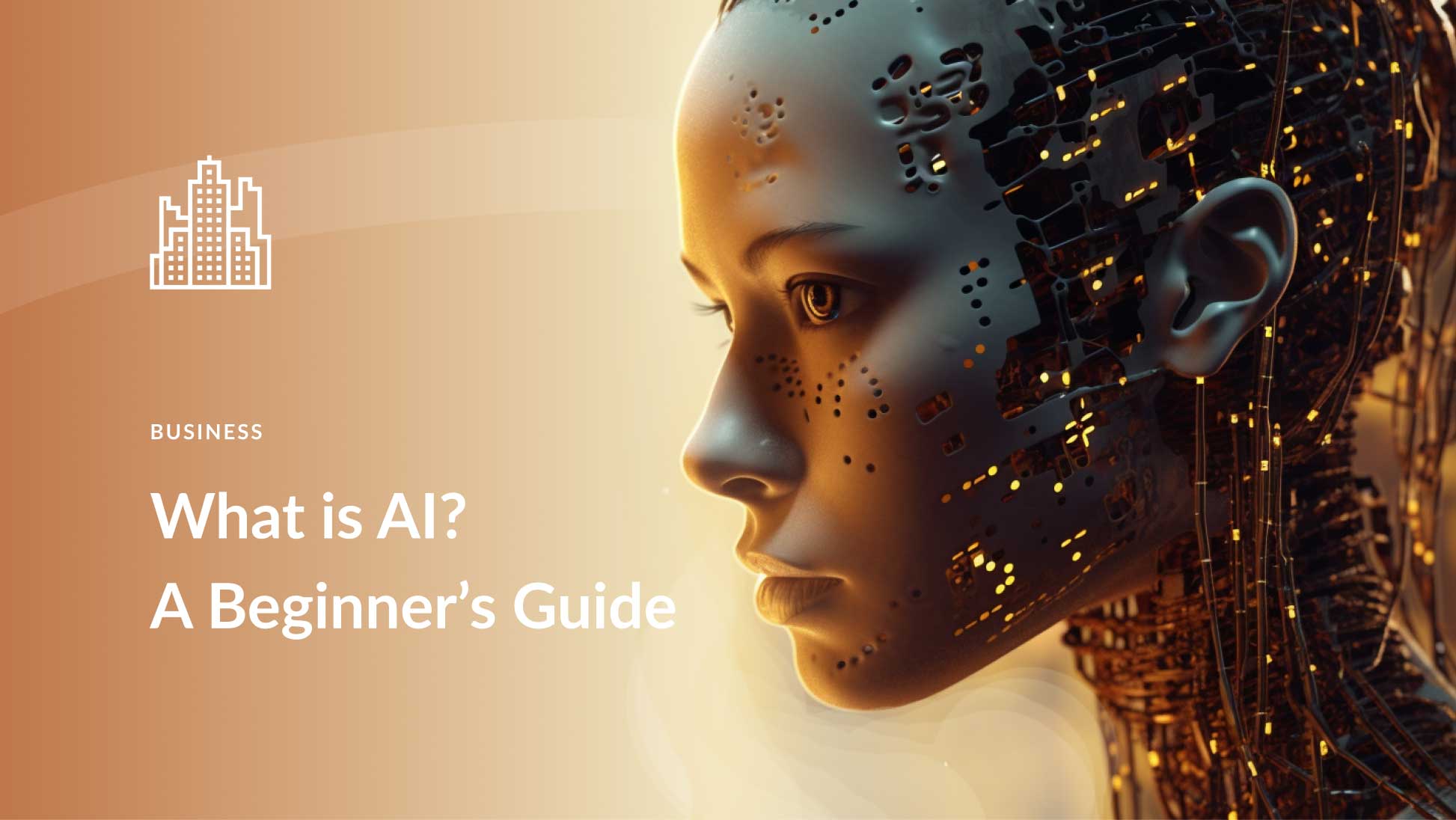
How AI Differs from Traditional Computer Programs
Understanding how AI differs from traditional computer programs is vital for grasping its capabilities. Traditional software relies on a fixed set of instructions to perform tasks, focusing on input-output relationships defined by code. In contrast, AI harnesses complex algorithms and large datasets to identify patterns and make decisions autonomously. This distinction is crucial in several ways:
- Dynamic Learning: While traditional programs perform tasks with pre-defined logic, AI can learn and adapt over time. This means that an AI system can improve its performance with exposure to new data, unlike static programs that require manual updates.
- Functionality Scope: Traditional software operates best in predictable environments with well-defined variables. AI systems excel in more dynamic settings, where uncertainties exist, such as interpreting vague language cues or recognizing images in varied contexts.
- Predictive Capabilities: AI uses historical data to make informed predictions and decisions, paving the way for enhancements such as predictive maintenance in manufacturing or customer insights in retail.
In summary, while traditional computer programs are limited to executing predefined instructions, AI systems are designed to learn from experience, exhibiting advanced decision-making capabilities that can adapt to new challenges as they arise.
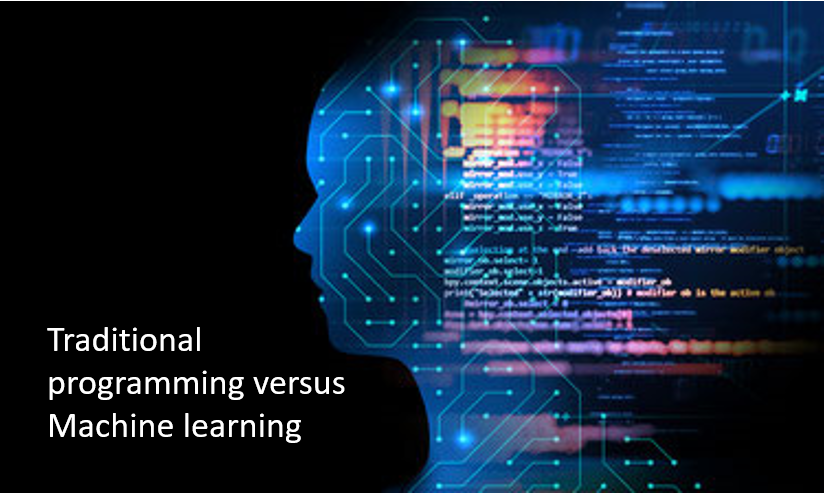
The Goals and Objectives of AI Development
The development of AI is driven by several ambitious goals aimed at improving the efficiency and efficacy of tasks typically performed by humans. Among the primary objectives are:
- Automation of Tasks: AI seeks to automate routine and repetitive tasks, freeing human operators to focus on more complex and strategic endeavors. For instance, AI technologies streamline data entry processes in various sectors, improving overall productivity.
- Enhanced Decision-Making: By leveraging advanced analytics and machine learning, AI can provide insights that guide business decisions. Predictive analytics in areas such as marketing could increase campaign effectiveness by targeting the right consumers at the right time.
- Improving User Experiences: AI aims to create personalized experiences through user input and behavior analysis. For instance, streaming services utilize AI algorithms to suggest content based on users’ viewing habits, thereby enhancing engagement.
- Human-Like Interaction: A critical aspect of AI goals is to create systems capable of understanding and engaging with humans in natural language. Chatbots and virtual assistants are prime examples of this objective, functioning in customer support and personal management roles.
In essence, AI development is primarily focused on enhancing productivity, decision quality, and user experiences while working toward human-like interactions, signaling significant strides in machine-human collaboration.
The Core Components of AI
Artificial Intelligence is a sophisticated amalgamation of several core components, each contributing to its ability to operate intelligently and autonomously. The foundational elements include:
- Learning Mechanisms: These mechanisms enable AI systems to adapt based on data and experience. This includes methods such as:
- Supervised Learning: Where a model learns from labeled data.
- Unsupervised Learning: In which the system identifies patterns without labeled outcomes.
- Reinforcement Learning: Where agents learn optimal actions through trial and error.
- Data Handling: Effective management of large datasets is crucial for training AI models. AI can process both structured data (like spreadsheets) and unstructured data (such as text, images, and videos), making it versatile in learning from diverse datasets.
- Modeling Techniques: AI employs various algorithms to create models that analyze patterns within data. Common algorithms include
- Decision Trees
- Neural Networks
- Support Vector Machines
- Adaptability: AI systems continually learn from new information, improving their performance over time. Whether it’s optimizing delivery routes in a logistics scenario or enhancing customer interaction through tailored experiences, adaptability is key to AI’s success.
This collective framework enables AI to perform tasks with human-like intelligence, revolutionizing how machines tackle complex tasks and challenging environments.
Machine Learning – How AI Learns from Data
Machine Learning (ML) is a pivotal subset of AI that facilitates the development of algorithms that improve automatically through experience. At the heart of ML are data-driven methods that allow systems to learn from past experiences and make predictions accordingly. Here’s how this transformative process occurs:
- Data Input: The learning process begins with substantial datasets, which can be labeled (for supervised learning) or unlabeled (for unsupervised learning). For instance, an e-commerce platform may use customer purchase data to predict future behavior.
- Algorithm Selection: Various ML algorithms categorize data and identify hidden patterns. Some commonly used algorithms include:
- Linear Regression
- Decision Trees
- Random Forests
- Gradient Boosting Machines
- Training Process: During training, the machine analyzes the training data to minimize errors in predictions. Techniques such as cross-validation ensure that the model generalizes well, avoiding overfitting.
- Model Evaluation: Post-training, the model is evaluated using separate datasets to assess its performance. Metrics like accuracy, precision, and recall are essential to determine how well the model performs in predicting or classifying new data instances.
- Continuous Learning: As new data becomes available, the model can be retrained to enhance its accuracy and adapt to shifting trends. This capability is vital in dynamic industries where consumer preferences evolve rapidly.
Through machine learning, AI systems gain the ability to make informed decisions based on patterns and trends within data, demonstrating a significant leap from traditional programming to intelligent machine learning.
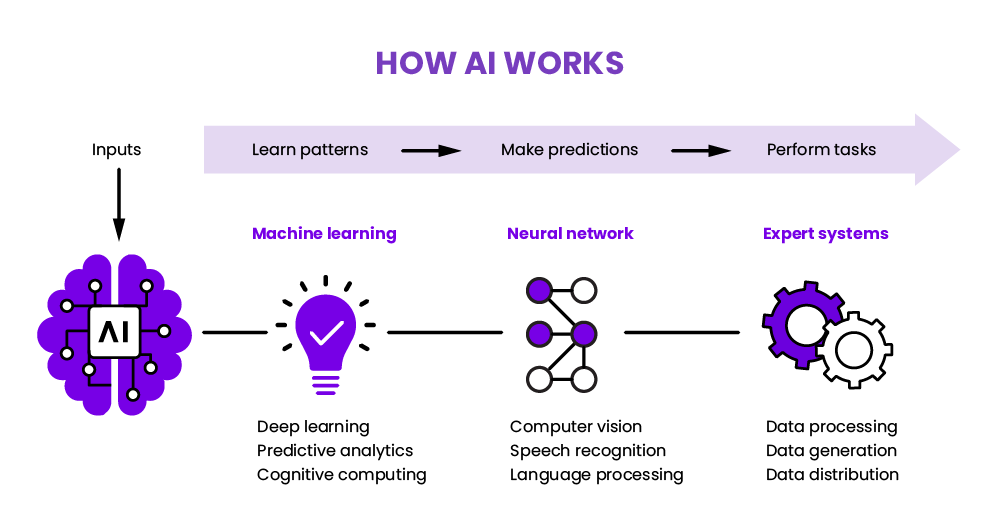
Deep Learning – The Role of Neural Networks
Deep Learning, a specialized domain under machine learning, employs neural networks that mimic the human brain’s workings. This approach has revolutionized how AI interprets and processes vast amounts of complex data. Here’s a closer look at how deep learning functions:
- Architecture: Deep Learning utilizes artificial neural networks (ANNs) made up of layers input layers, hidden layers, and output layers. Each layer consists of interconnected neurons that process data through mathematical computations.
- Data Flow: Information moves through the layers, with the hidden layers extracting intricate features from raw data. For example, when processing an image, early layers may identify edges, while deeper layers may recognize shapes and objects.
- Training Methodology: As with traditional machine learning, deep learning models undergo training on large datasets. The key difference lies in the depth of the network and the volume of parameters to fine-tune during training. Techniques such as backpropagation help in minimizing prediction errors across layers.
- Applications: Deep learning excels in tasks requiring high-dimensional data analysis, such as:
- Image Recognition: Identifying and classifying objects in images.
- Speech Recognition: Converting spoken language into text.
- Natural Language Processing: Understanding and generating human language.
- Impact on AI: The rise of deep learning, powered by advancements in computational power and data availability, has significantly improved AI performance in various domains, including autonomous systems, computer vision, and personalized recommendations.
Through its advanced architectures and extensive data analysis capabilities, deep learning is a cornerstone of modern AI technologies, pushing the boundaries of machine intelligence.
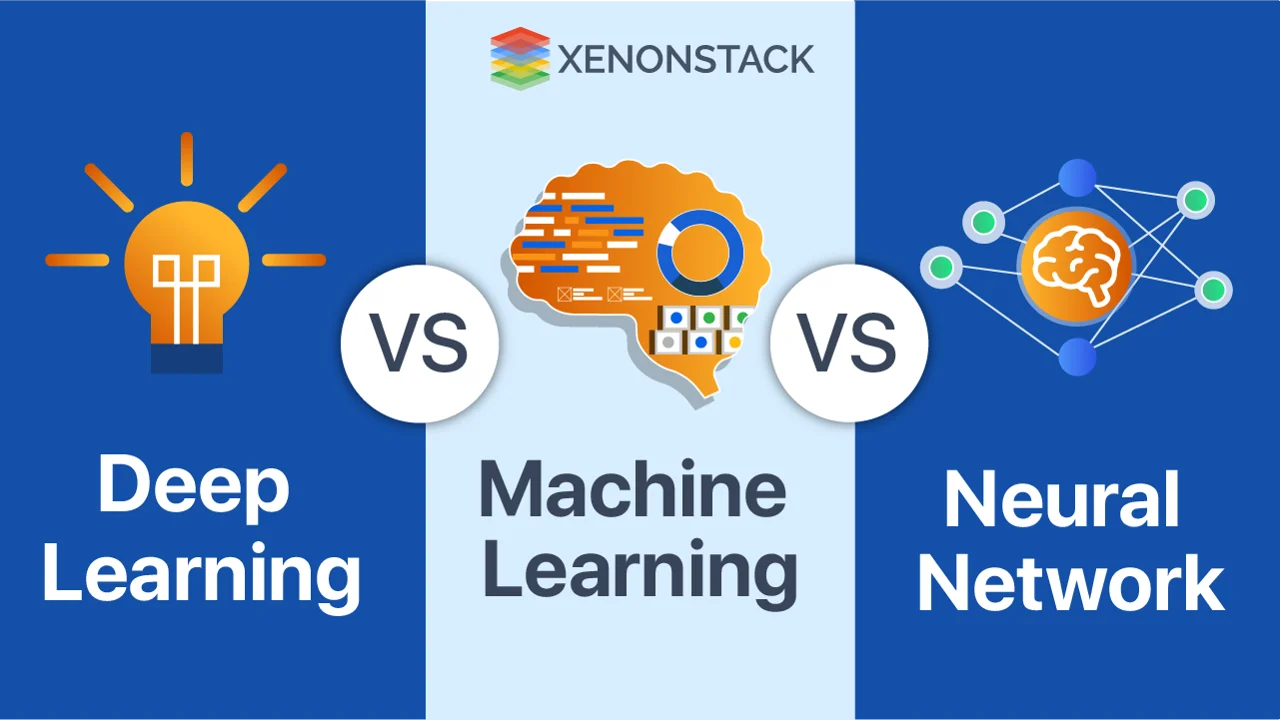
Natural Language Processing – How AI Understands Human Language
Natural Language Processing (NLP) is a critical branch of AI dedicated to enabling machines to interpret and generate human language. Given the complexities of human language, NLP strives to achieve seamless communication between humans and machines. Key components of NLP include:
- Tokenization: This foundational technique involves breaking down text into smaller units, known as tokens (words or phrases). This simplification is essential for further analysis and understanding.
- Parsing: Parsing focuses on analyzing the grammatical structure of sentences to comprehend relationships between words and phrases. This step is crucial for understanding the context of written language.
- Semantic Analysis: Beyond mere syntax, semantic analysis looks at the meanings embedded within sentences. By employing techniques such as word embeddings, NLP allows machines to comprehend context and nuance, significantly enhancing understanding.
- Applications: NLP powers various technologies, including:
- Chatbots and Virtual Assistants: Facilitating natural interactions with users by comprehending queries and providing responses.
- Language Translation Services: Converting text or spoken words from one language to another, such as Google Translate.
- Sentiment Analysis: Analyzing customer feedback to gauge public sentiment about products or services.
- Advancements: Modern NLP applications have benefited tremendously from deep learning, with transformer models like BERT and GPT-3 driving significant advancements in capabilities. These models leverage large textual datasets to dramatically enhance comprehension and generation abilities.
Through its sophisticated approaches, NLP is a cornerstone of AI that enables machines to interact with humans naturally, enhancing communication in various sectors like customer service, education, and content generation.
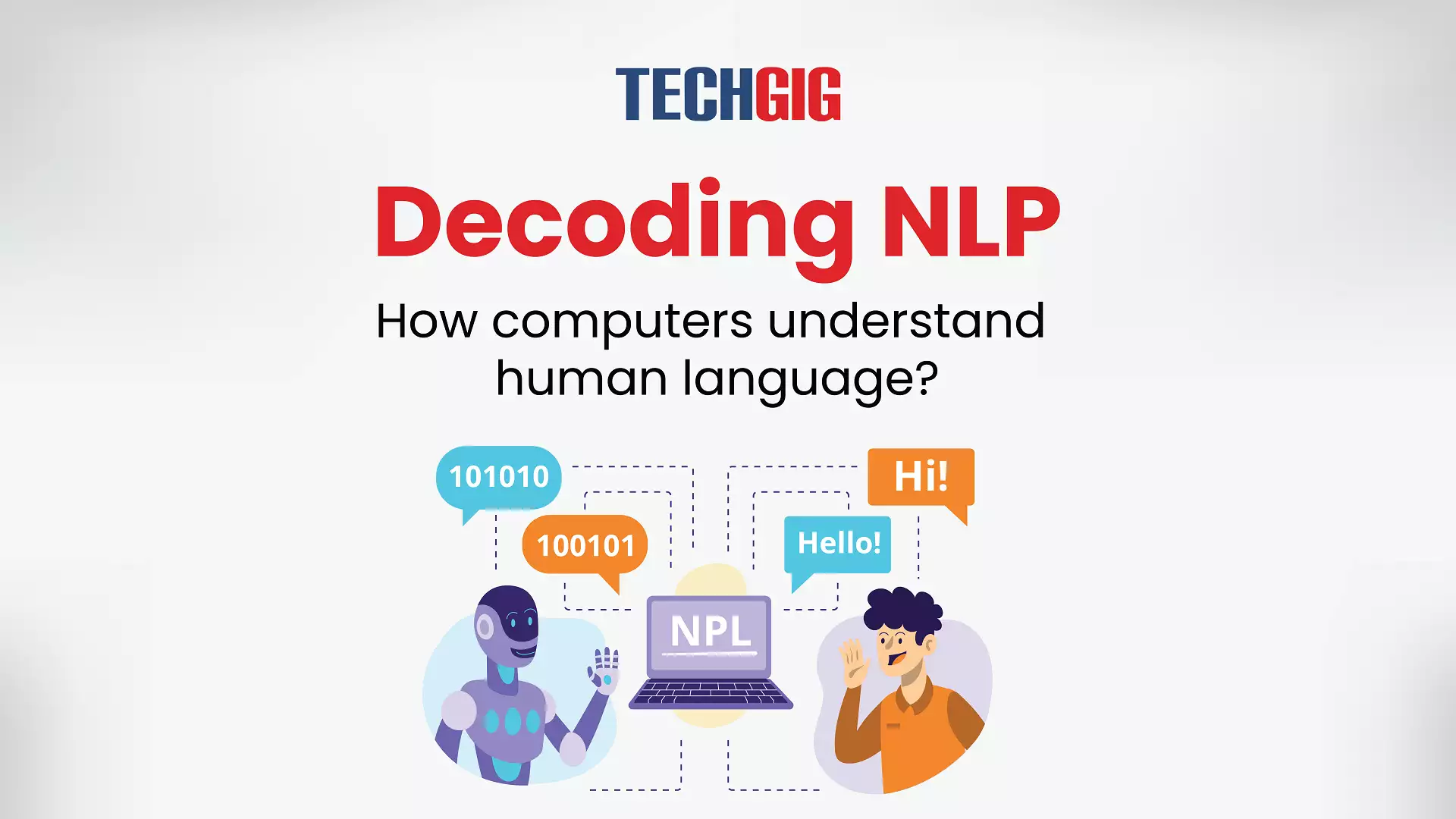
Computer Vision – How AI Interprets Images and Videos
Computer Vision is a fascinating field of AI that enables machines to interpret and understand visual data, such as images and videos. This technology mimics human visual processing, empowering machines to recognize and analyze visual inputs. Key aspects of computer vision include:
- Image Acquisition: The initial step involves capturing visual data using cameras or sensors. These raw images serve as the foundation for further analysis and processing.
- Pre-processing: Raw images often undergo filtering to enhance clarity. Techniques like noise reduction and image resizing ensure better accuracy during subsequent analysis.
- Feature Extraction: In this stage, the system identifies crucial details such as edges and textures vital for recognizing objects or understanding scenes. This process sets the scene for deeper analytical tasks.
- Pattern Recognition: Utilizing machine learning models, computer vision systems identify and categorize visual patterns. This involves training models on labeled datasets so that they can distinguish between objects and scenes based on learned features.
- Applications: The impact of computer vision is significant across various fields:
- In Healthcare, computer vision assists in analyzing medical images for diagnostic purposes.
- Autonomous Vehicles leverage computer vision for real-time navigation and safety assessments.
- Surveillance Systems deploy computer vision technologies to monitor public spaces and ensure security.
By empowering machines to analyze visual information, computer vision not only enhances operational efficiency across multiple domains but also replicates aspects of human eyesight, enabling new possibilities within technology.

How AI Works
Delving into the workings of AI entails examining how it processes information and makes decisions based on data. Understanding these mechanics will illuminate the foundational principles that underpin AI’s capabilities and applications:
- Algorithm Utilization: AI systems utilize algorithms to analyze data, which can be thought of as sets of rules or instructions programmed to perform specific tasks. Depending on the application, different algorithms may be employed to process and analyze varying types of data efficiently.
- Data Processing: The vast amount of data available today provides the foundation for AI learning. AI systems leverage machine learning or deep learning algorithms to sift through large datasets, extracting useful insights and identifying patterns.
- Training and Validation: AI systems undergo rigorous training using historical data to improve performance on predictive tasks. By validating using unseen data, developers ensure that the models generalize well and perform accurately in real-world scenarios.
- Feedback Loops: Many AI systems incorporate feedback loops to improve performance continually. Continuous learning enables AI to adjust its algorithms based on new data, enhancing responsiveness and adaptability in changing environments.
- Integration with Other Technologies: AI often operates in synergy with other technologies, such as IoT (Internet of Things), to leverage real-time data from connected devices. This enhances situational awareness, allowing AI to optimize decision-making processes effectively.
By combining sophisticated algorithms with vast datasets, AI systems can operate autonomously, learn from past experiences, and deliver remarkable performance across various domains.
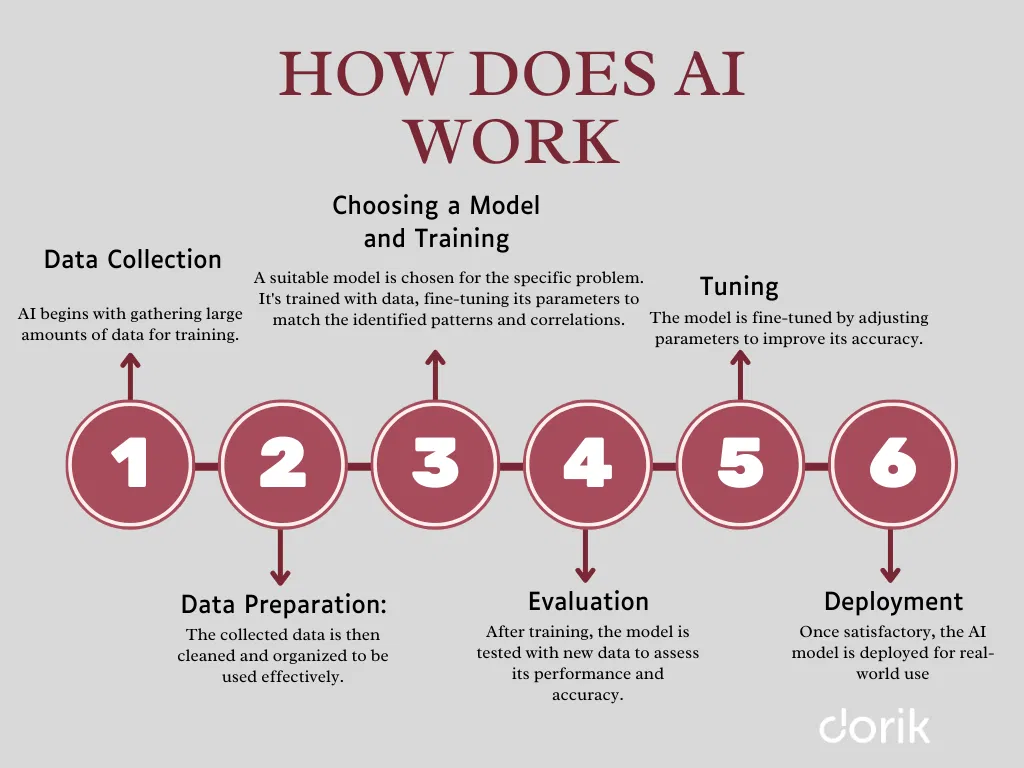
The Process of AI Training and Model Development
The process of training AI models is crucial for ensuring they perform accurately and reliably in real-world scenarios. The steps in AI training and development include:
- Data Collection: Gathering relevant datasets is the first step in model development. This data should be representative of the problem the model aims to solve, whether that’s in healthcare diagnostics, financial analysis, or another field.
- Data Preprocessing: Raw data often requires cleaning to remove inconsistencies and missing values. Preprocessing steps can include normalizing values, handling outliers, and encoding categorical variables into numerical formats.
- Choosing the Right Algorithm: The choice of algorithm significantly impacts model performance. Various algorithms offer different strengths depending on the specific task at hand, such as linear regression for predictive tasks or neural networks for image recognition.
- Training the Model: Once the algorithm is applied to the training dataset, the model learns by discovering patterns and establishing relationships between input data and desired outputs. This process often entails iterating through cycles until optimal performance is achieved.
- Model Evaluation and Tuning: Evaluation metrics are crucial for assessing a model’s performance. Techniques like cross-validation help identify potential issues such as overfitting, where a model performs well on training data but poorly on new data. Hyperparameter tuning can be employed to fine-tune model performance based on evaluation results.
Through careful planning and execution of these steps, AI practitioners can develop robust models that produce accurate and reliable predictions across various applications.
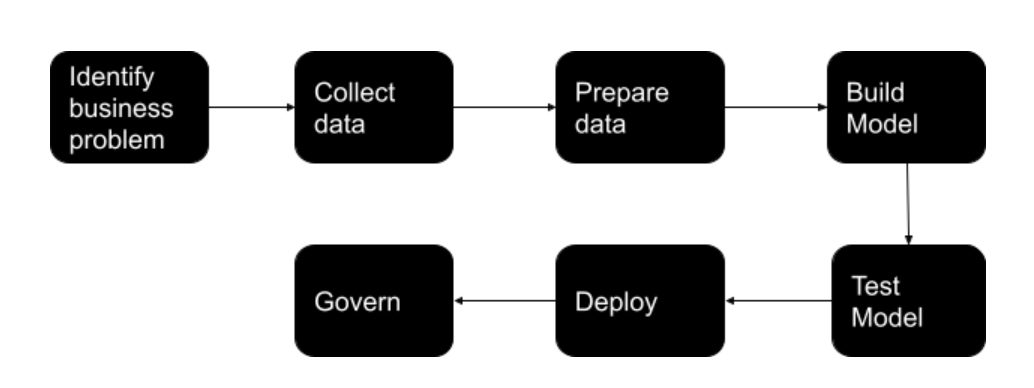
Supervised vs. Unsupervised Learning
AI employs various learning methodologies, primarily categorized into supervised and unsupervised learning paradigms. Understanding their differences is vital for effectively leveraging AI capabilities:
- Supervised Learning:
- Definition: In supervised learning, models are trained using labeled datasets where each input is paired with a corresponding output label.
- Objective: The goal is to learn the mapping between inputs and outputs so that the model can accurately predict outcomes for new, unseen data.
- Examples: Applications of supervised learning include sentiment analysis, fraud detection, and image classification.
- Advantages: Supervised learning typically yields high accuracy if sufficient labeled data is available.
- Unsupervised Learning:
- Definition: This approach involves training models on datasets without predefined labels. The objective is to uncover hidden structures in the data.
- Objective: The primary aim is to identify groupings or relationships within the data to gain insights that weren’t immediately apparent.
- Examples: Common applications include customer segmentation in marketing, anomaly detection, and dimensionality reduction.
- Advantages: Unsupervised learning excels in scenarios where labeled data is scarce, offering valuable exploratory insights.
- Key Differences:
- Data Requirements: Supervised learning requires labeled datasets, while unsupervised learning operates on unlabeled data.
- Interpretation: Outputs from supervised learning are explicit predictions, while unsupervised results need further interpretation to derive meaning.
In conclusion, the choice between supervised and unsupervised learning depends on available data types, project objectives, and the desired insights or predictions.
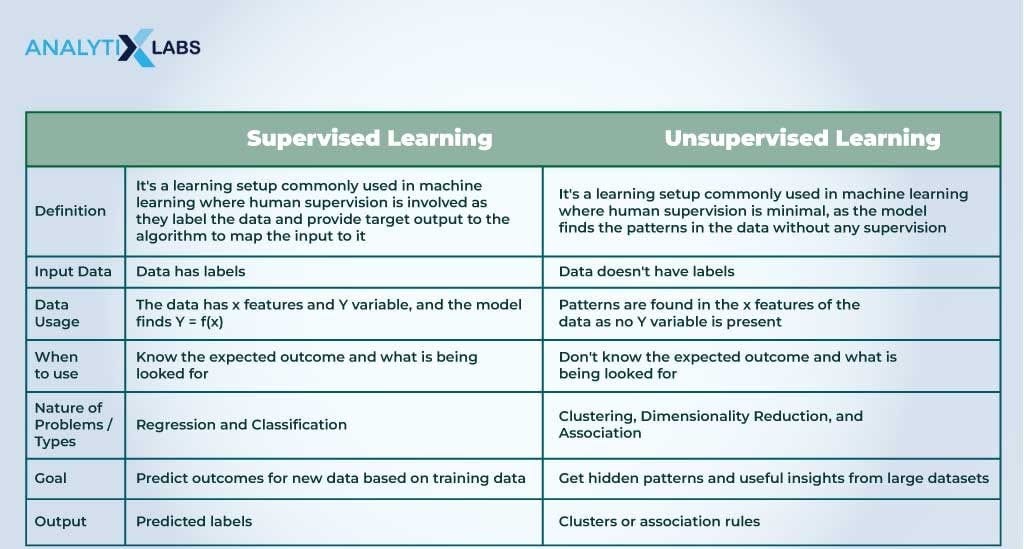
The Role of Big Data in AI Performance
Big Data plays a critical role in enhancing AI performance, forming the backbone of modern AI systems. As organizations accumulate vast amounts of data, the ability to harness this information is essential for developing robust AI applications. Here’s how Big Data intersects with AI:
- Data Volume: The sheer volume of available data provides AI algorithms with the extensive datasets needed for training. Such datasets enable models to learn efficiently and accurately, leading to improved performance.
- Diverse Data Types: Big Data encompasses various types of information, including structured data (like databases) and unstructured data (such as text, images, and videos). This diversity enriches the training process, allowing AI systems to tackle complex scenarios with greater accuracy.
- Real-Time Processing: AI in conjunction with Big Data technologies like Apache Hadoop and Apache Spark enables the analysis of data in real-time. This capability enhances operational decision-making by providing insights as events happen, which is particularly beneficial in industries like finance and healthcare.
- Predictive Analytics: Leveraging Big Data allows AI models to uncover patterns that were previously hidden within the data. This leads to more accurate predictions, whether it’s in analyzing consumer behavior for targeted marketing or optimizing supply chains.
- Emerging Technologies: As AI technologies advance, the integration of Big Data and AI is crucial for developing innovative solutions. For example, AI-powered chatbots leverage vast customer interaction data to enhance natural language understanding and improve user engagement.
Big Data’s synergy with AI not only enhances the capabilities of systems but also drives innovation, leading to more informed decision-making across industries.
AI Algorithms and Their Applications
AI algorithms form the foundation of various AI applications, enabling machines to learn, predict, and act autonomously. A range of algorithms are utilized across different domains, showcasing their diverse applications:
- Types of AI Algorithms:
- Decision Trees: Ideal for classification tasks, decision trees split data into branches to make decisions based on various criteria.
- Support Vector Machines (SVM): This supervised learning model is effective for classification problems by finding the optimal hyperplane to separate different data classes.
- Neural Networks: Utilizing interconnected nodes (neurons), neural networks excel in processing complex data for tasks such as image and speech recognition.
- Random Forests: An ensemble method that combines multiple decision trees to enhance accuracy and reduce overfitting, suitable for both classification and regression tasks.
- K-Means Clustering: An unsupervised learning algorithm used for grouping similar data points into clusters based on feature similarity.
- Applications Across Industries:
- Healthcare:
- AI algorithms support diagnostic tools that assist in disease detection, such as identifying tumors in radiological images.
- Finance:
- Algorithms monitor transactions to flag suspicious activities, thereby aiding fraud detection while optimizing algorithmic trading strategies.
- Marketing:
- Predictive modeling algorithms help firms target audiences effectively, optimizing advertisement spending based on consumer behavior analysis.
- Healthcare:
- Real-time Decision-Making:
- Many AI systems leverage algorithms to make real-time decisions. Features like chatbots utilize NLP algorithms to enhance user interaction, while recommendation systems analyze user behavior to suggest relevant products or services.
- Continuous Improvement:
- As new data flows in, AI algorithms can be retrained to refine models and improve accuracy. This adaptability is key in maintaining their effectiveness as industry conditions change.
AI algorithms are central to realizing the potential of artificial intelligence, serving as the driving force behind numerous innovative applications across diverse sectors.
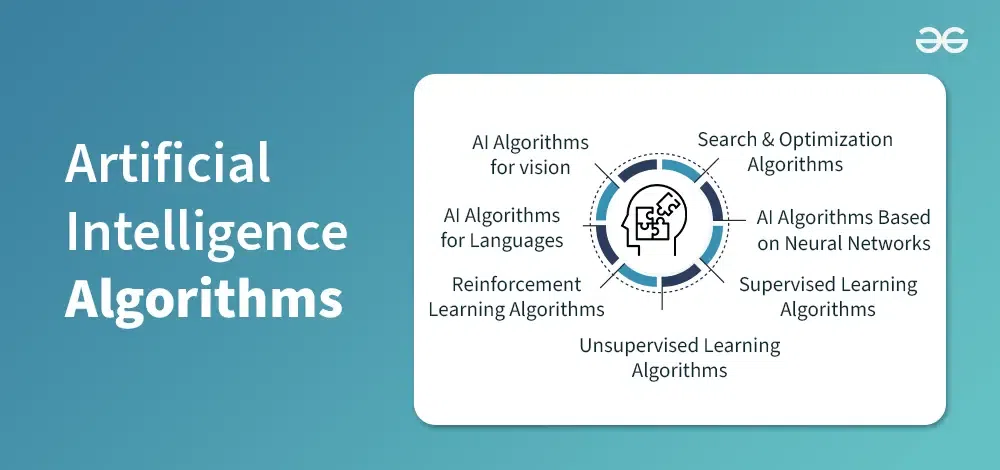
Different Types of AI
Understanding the different types of AI helps clarify the capabilities and applications of artificial intelligence in various domains. Primarily, AI can be categorized into the following types:
- Weak AI (Narrow AI):
- Definition: Refers to AI systems that are designed to perform specific tasks or solve particular problems. Examples include virtual assistants like Siri or Watson, which excel in defined functions but lack general intelligence.
- Application Areas: Chatbots, recommendation systems, and facial recognition technologies are typical implementations of Narrow AI.
- Strong AI (General AI):
- Definition: This concept refers to hypothetical AI systems with human-like cognitive abilities across a broad range of tasks. Strong AI would possess the ability to understand, reason, learn, and apply knowledge autonomously, similar to a human.
- Current Status: General AI remains largely theoretical, with ongoing research aimed at replicating human cognitive functions.
- Super AI (Superintelligence AI):
- Definition: This theoretical AI would surpass human intelligence across all domains cognition, emotional intelligence, creativity, and decision-making. This level of intelligence poses profound ethical questions about control and alignment with human values.
- Implications: Super AI represents a potential future in AI development, prompting discussions around regulation, safety, and ethical considerations surrounding its deployment.
Understanding these classifications is pivotal, not just in grasping where AI currently stands but also in anticipating its future direction and implications for society.
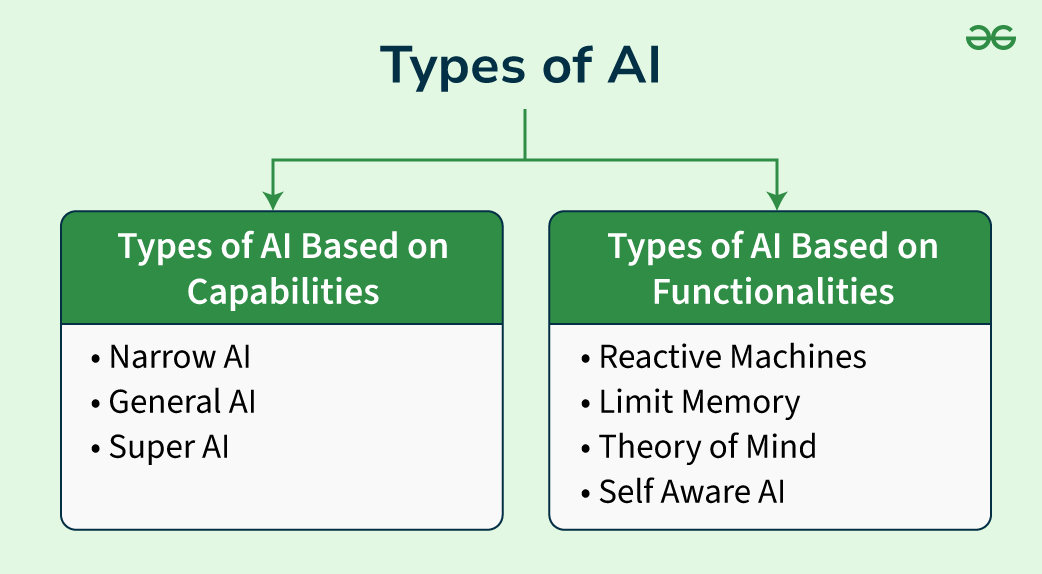
Weak AI (Narrow AI) – AI Specialized for Specific Tasks
Weak AI, also known as Narrow AI, exemplifies systems designed to execute specific tasks efficiently without understanding beyond their programmed instructions. Here’s a deeper insight into this category:
- Definition: Weak AI systems are tailored for individually focused applications. They operate within a limited set of functions, achieving remarkable results in tasks for which they are designed.
- Common Applications:
- Chatbots: Provide customer service support by answering common inquiries based on predefined responses.
- Recommendation Systems: Analyzing user data to suggest products or content, like Netflix recommendations.
- Speech Recognition: Technologies such as Siri or Google Assistant that convert spoken language into text or actions.
- Advantages:
- Efficiency: Weak AI can perform specific tasks faster and more accurately than humans, particularly in data analysis.
- Cost-Effectiveness: Automation of specific tasks reduces labor costs and allows businesses to allocate human resources to more complex tasks.
- Limitations:
- Lack of Understanding: Weak AI lacks understanding of broader contexts or general intelligence, making it ineffective beyond its trained tasks.
- Dependency on Data: Performance is heavily reliant on the quality and extent of data used for training.
Weak AI serves as a powerful tool in diverse industries by enhancing specific operational capabilities but remains constrained by its narrow focus and specialized functions.
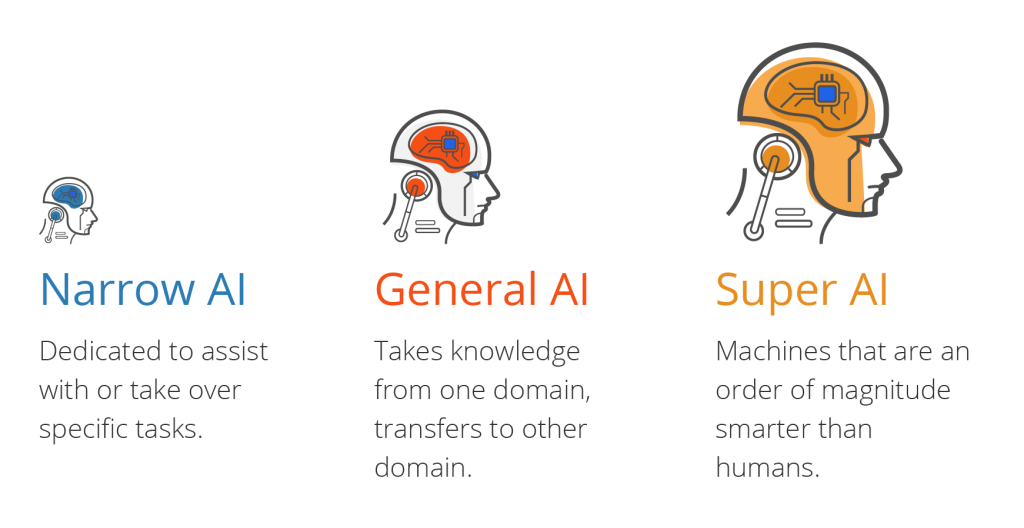
Strong AI (General AI) – AI with Human-Like Intelligence
Strong AI, or General AI, refers to AI systems that can replicate human cognitive abilities across diverse tasks. Distinct from Weak AI, which is limited to specific functions, Strong AI aims to perform any intellectual task a human can do. Here are some key aspects:
- Definition: Strong AI seeks to possess general cognitive capabilities that include learning, reasoning, problem-solving, and understanding complex concepts.
- Theoretical Implications:
- Cognitive Abilities: Strong AI would not only learn from data effectively but also possess emotional intelligence, insight, and creativity attributes typically regarded as human.
- Autonomous Decision-Making: This type of AI would be capable of making decisions independently, in scenarios requiring complex analysis and moral considerations.
- Development Status:
- As of now, Strong AI exists mainly in theoretical discussions, with no existing systems that attain this level of intelligence. Researchers continue to explore pathways to achieve such advancements.
- Ethical Considerations:
- The development of Strong AI raises numerous ethical questions around safety, control, and societal implications. Ensuring that Strong AI aligns with human values and operates within ethical bounds is crucial for its potential deployment.
Strong AI represents a frontier of AI advancement, promising exceptional capabilities but also presenting profound challenges surrounding human-AI interactions and governance.
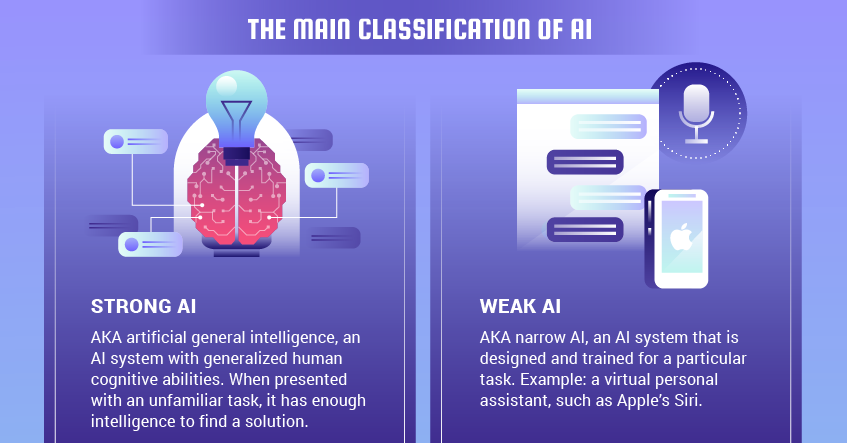
Super AI – Theoretical AI That Surpasses Human Intelligence
Super AI, often referred to as superintelligence AI, envisions an artificial intelligence that significantly exceeds human intelligence across all spheres cognitive, emotional, and creative. The concept presents unique challenges and opportunities, as outlined below:
- Definition:
- Super AI denotes AI systems capable of outperforming humans in virtually every task, including problem-solving, learning quickly, and even creativity. This theoretical AI is an advanced evolution of Strong AI.
- Potential Benefits:
- Superintelligence AI could dramatically enhance various sectors, including healthcare (accelerated drug discovery), engineering (innovative problem-solving), and finance (optimized trading strategies).
- Its ability to analyze and synthesize vast amounts of data could lead to breakthroughs currently unimaginable.
- Challenges:
- Ethical Concerns: The emergence of superintelligence AI raises questions about control, alignment with human values, and potential societal implications, including job displacement and power imbalances.
- Existential Risks: With autonomous decision-making capabilities, superintelligence AI could pose risks if its objectives misalign with human welfare.
- Current Perspectives:
- Researchers like Nick Bostrom highlight the urgency of establishing frameworks for safely managing superintelligence AI, ensuring its developments align positively with human goals.
Super AI remains a theoretical concept, yet it illustrates the profound trajectories AI can potentially take, sparking discussions about control, ethics, and its responsible integration into society.
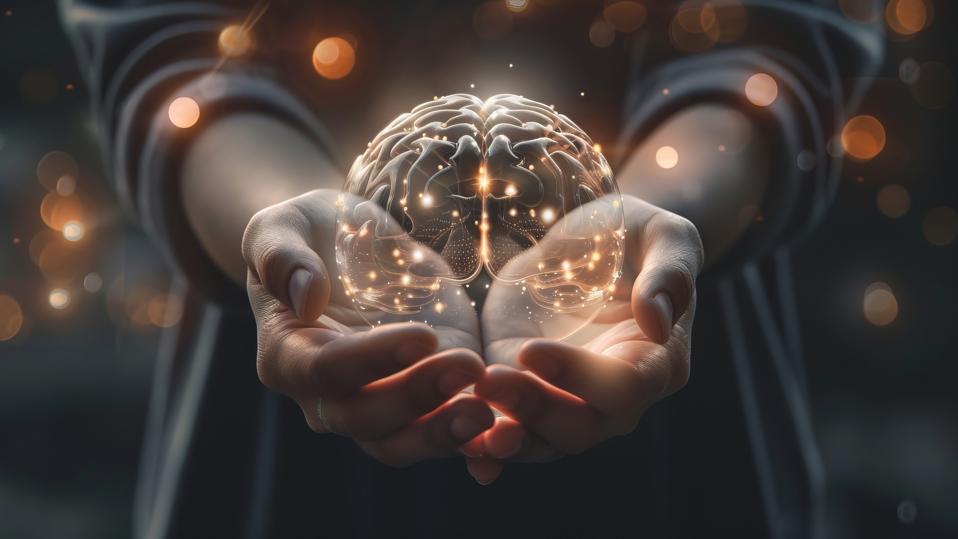
Real-World Applications of AI
As AI continues to evolve, its applications are transforming industries, enhancing performance and unlocking new capabilities across various sectors. Here are notable applications:
- AI in Healthcare:
- AI is revolutionizing healthcare through improved diagnostics, where algorithms analyze medical images, assisting doctors in identifying diseases such as cancer. Additionally, AI systems streamline drug discovery processes by analyzing chemical compounds and predicting interactions.
- AI in Business:
- Automating routine tasks such as data entry allows businesses to focus on strategic initiatives. AI chatbots enhance customer experiences by providing 24/7 support, both improving customer satisfaction and freeing human agents to handle complex queries.
- AI in Finance:
- Financial institutions utilize AI algorithms for fraud detection, alerting businesses to unusual transaction patterns. Furthermore, AI supports algorithmic trading by executing trades at high speeds based on real-time market analysis.
- AI in Education:
- Personalized learning experiences are facilitated through AI platforms that adapt to students’ needs, enhancing engagement. Intelligent tutoring systems offer real-time feedback and guidance, simulating one-on-one interactions to boost learning outcomes.
- AI in Autonomous Vehicles:
- AI powers self-driving cars and traffic optimization, with systems analyzing real-time data from various sensors to navigate roads safely and efficiently. Companies like Tesla utilize AI for real-time decision-making in vehicle navigation.
AI’s real-world applications highlight its transformative potential across multiple sectors, driving innovation, efficiency, and enhanced decision-making capabilities.
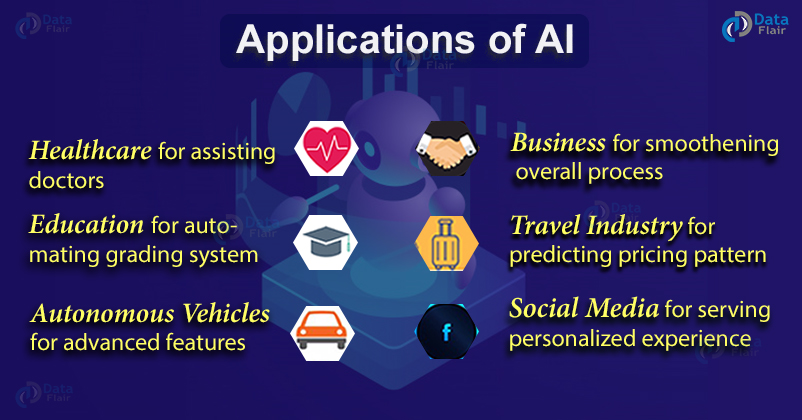
AI in Healthcare – Diagnosis, Drug Discovery, and Personalized Medicine
Artificial Intelligence has made significant strides in the healthcare industry, influencing diagnostics, drug discovery, and personalized medicine. The integration of AI technologies is revolutionizing the way healthcare providers operate and deliver patient care.
- Diagnosis: AI algorithms are capable of analyzing complex medical data, including medical imaging from radiology and pathology. For example, AI systems can identify patterns in mammograms or MRI scans, often achieving accuracy rates surpassing human radiologists. This capability not only aids in early detection, improving patient outcomes, but also supports healthcare professionals by reducing workloads.
- Drug Discovery: AI accelerates the drug discovery process by analyzing vast datasets related to drug interactions and biological mechanisms. Machine learning models predict how different compounds will react, facilitating the identification of potential therapeutic targets. By simulating clinical trial outcomes, AI contributes to faster and more cost-effective drug development processes, leading to more therapies reaching patients more efficiently.
- Personalized Medicine: AI revolutionizes treatment approaches by tailoring therapies based on individual patient data, including genetic information and lifestyle factors. AI-driven analytics help healthcare professionals create customized treatment plans, enhancing efficacy and minimizing side effects. For instance, predictive models can guide clinicians in selecting medications most likely to benefit specific patients based on their unique profiles.
- Administrative Support: In addition to clinical applications, AI streamlines administrative tasks by automating scheduling and billing processes, significantly improving operational efficiency within healthcare organizations.
- Research and Development: AI also facilitates breakthroughs in medical research by analyzing large volumes of scientific literature and clinical trial data, ultimately advancing the development of innovative therapies and approaches.
The integration of AI in healthcare not only enhances diagnostic accuracy and streamlines drug discovery but also facilitates personalized treatment plans that align with individual patient needs, thereby revolutionizing patient care and health outcomes.
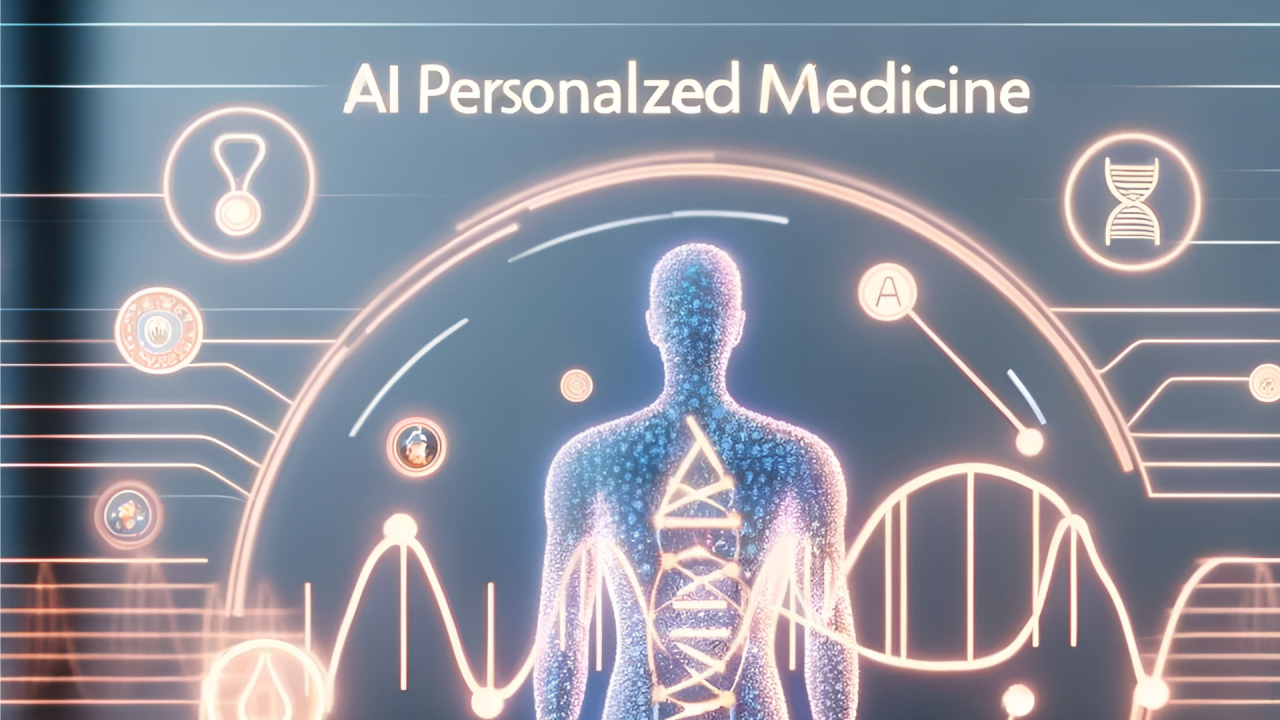
AI in Business – Automation, Chatbots, and Decision-Making
Artificial Intelligence is transforming the business landscape by streamlining operations, enhancing customer interactions, and improving decision-making processes. Here are key applications of AI in business:
- Automation: AI-driven automation optimizes repetitive tasks, reducing the burden on human employees. Robotic Process Automation (RPA) combined with AI handles tasks such as data entry, invoice processing, and report generation, leading to significant time and cost savings.
- Chatbots: AI-powered chatbots provide 24/7 customer support, answering inquiries and resolving issues in real time. This enhances customer satisfaction by ensuring users receive immediate assistance while freeing human agents to tackle more complex tasks.
- Decision-Making: AI systems leverage data analytics to inform strategic decision-making. Predictive analytics helps businesses anticipate market trends, optimize inventory, and refine marketing efforts by analyzing consumer behaviors and preferences.
- Fraud Detection: AI algorithms monitor financial transactions in real time, identifying suspicious patterns that may indicate fraudulent activities. Companies like PayPal utilize AI to flag unusual transactions, thereby preventing potential financial losses.
- Personalization: AI enables businesses to deliver personalized experiences to customers by analyzing their behavior and preferences. E-commerce platforms, for instance, use AI recommendations to suggest products aligned with individual customer choices, enhancing user engagement.
AI’s integration into business processes drives efficiency, improves customer interactions, and empowers organizations to make data-informed decisions, positioning them for success in an increasingly competitive market.
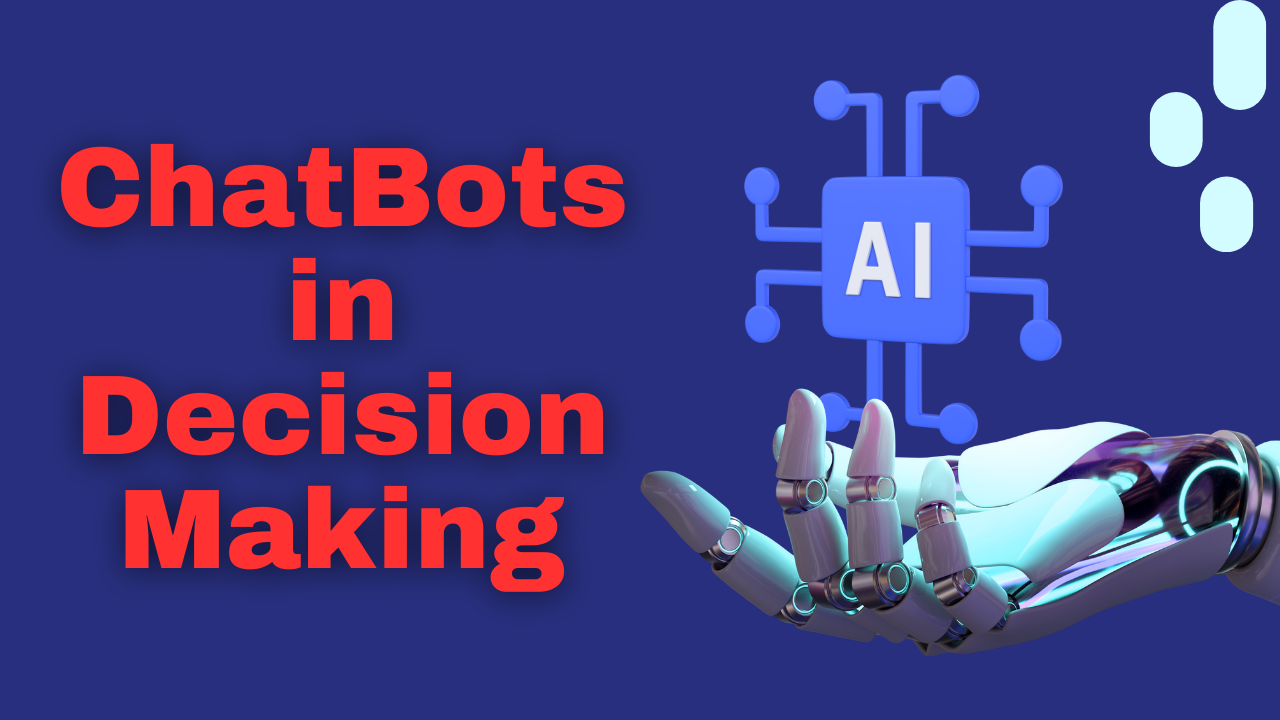
AI in Finance – Fraud Detection and Algorithmic Trading
The finance sector has embraced AI technologies to enhance operations, manage risks, and improve customer experiences. Notable applications of AI in finance include:
- Fraud Detection: AI algorithms play a crucial role in identifying fraudulent transactions by analyzing patterns in transactional data. Monitoring systems powered by machine learning can detect anomalies in real time, alerting organizations to potentially suspicious activities.
- Risk Assessment: Financial institutions utilize AI to assess and manage risks associated with lending. AI models analyze various factors, such as credit history and economic indicators, to evaluate the likelihood of loan default, aiding in smarter lending practices.
- Algorithmic Trading: AI-driven algorithmic trading analyzes vast amounts of market data in milliseconds, executing trades based on established strategies and patterns. This speed and sophistication allow financial institutions to capitalize on market fluctuations efficiently.
- Customer Service: AI-chatbots assist financial institutions by providing customers with real-time support for banking inquiries, credit applications, and other services. This improves customer engagement while reducing wait times.
- Portfolio Management: AI-powered platforms assist investors in portfolio management by analyzing market trends, predicting price movements, and automating trades according to pre-defined criteria. This enhances decision-making for both institutional and individual investors.
AI’s integration into finance enhances risk detection and customer experiences, driving innovations that optimize investment strategies and capitalize on market opportunities.

AI in Education – Personalized Learning and AI Tutors
Artificial Intelligence is making significant contributions to the field of education, transforming traditional learning methodologies and enhancing teaching approaches. Key applications of AI in education include:
- Personalized Learning: AI tailors learning experiences to meet the unique needs of individual students. Platforms employ adaptive learning algorithms to adjust lesson difficulty based on a learner’s performance, allowing for efficient studying at an individualized pace.
- Intelligent Tutoring Systems: AI-driven tools, like Carnegie Learning and ALEKS, simulate one-on-one interactions with students, providing immediate feedback and customized practice. These systems enhance personalized learning by identifying knowledge gaps and suggesting targeted exercises.
- Automated Grading: AI aids educators by automating grading processes for assignments and tests, allowing teachers to focus on providing personalized feedback rather than spending excessive time on evaluation.
- Data Analytics: AI analyzes student performance data, identifying patterns that inform educators about classroom engagement and success. These insights enable institutions to adjust curriculum and interventions based on empirical evidence.
- Engagement and Retention: Through gamified learning experiences and interactive content, AI increases student engagement, making learning more enjoyable and effective. This approach not only retains students but also fosters a positive learning environment.
AI’s integration into education enhances personalized learning experiences, optimizes instructional time, and empowers educators with valuable insights, ultimately driving academic success and student engagement.
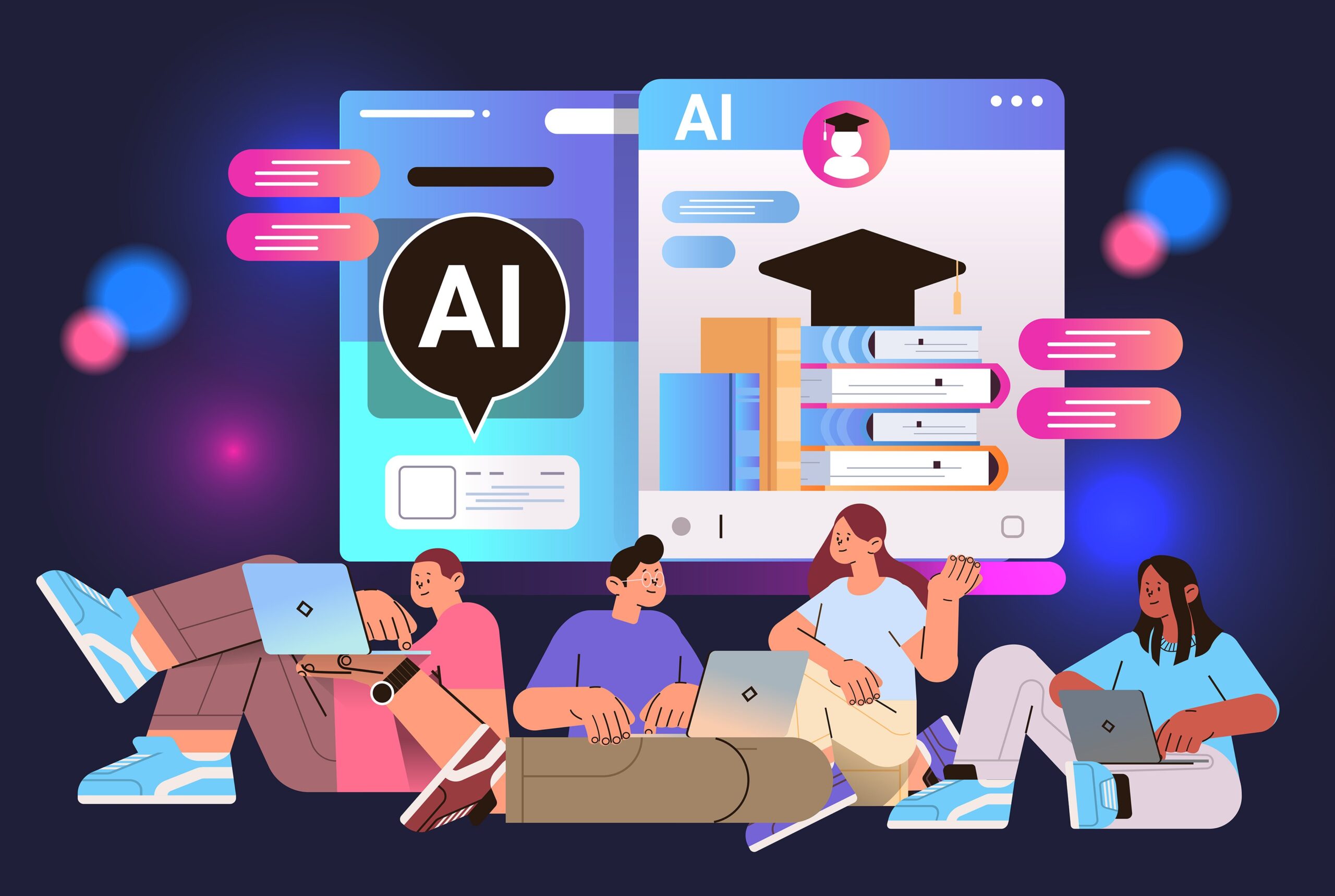
AI in Autonomous Vehicles – Self-Driving Cars and Traffic Optimization
The application of artificial intelligence in autonomous vehicles is fundamentally transforming the transportation sector. Here are key aspects of how AI is reshaping mobility:
- Self-Driving Cars: AI technologies enable vehicles to navigate roads and respond to diverse driving conditions through machine learning and sensor data analysis. Companies like Waymo and Tesla utilize sophisticated AI algorithms to enhance their self-driving capabilities, improving safety and operational efficiency.
- Sensor Fusion: Autonomous vehicles rely on a variety of sensors such as cameras, LiDAR, and radar to gather information about their surroundings. AI processes this real-time data, allowing vehicles to identify obstacles, lane markings, and traffic signals to make informed navigation decisions.
- Traffic Optimization: AI contributes to smart traffic systems and urban mobility management. AI-driven solutions analyze traffic patterns and optimize traffic light timings to reduce congestion and enhance road safety.
- Real-time Decision-Making: Autonomous vehicles leverage AI for rapid decision-making, allowing for reflexive responses to unpredictable scenarios, such as sudden stops or emergency vehicle approaches.
- Safety Enhancements: Through AI-driven predictive analytics, autonomous systems can assess potential hazards and preemptively respond, significantly reducing the likelihood of accidents.
AI’s continued advancement in autonomous vehicles promises to improve transportation safety, reduce congestion, and lead to efficient urban mobility solutions.
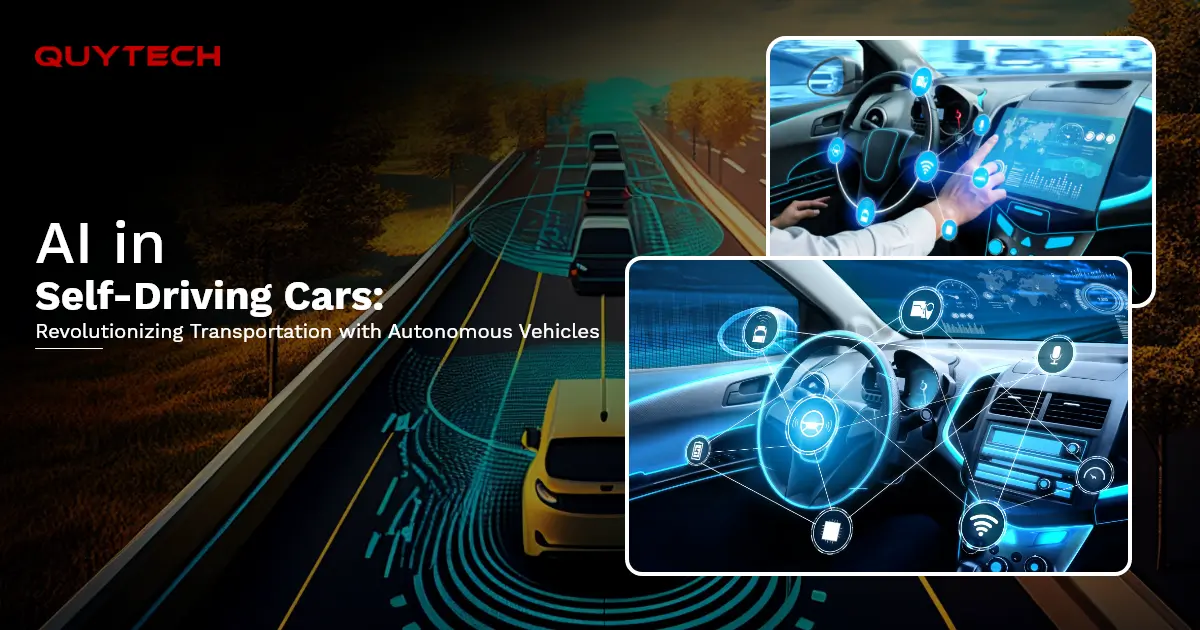
Ethical and Social Implications of AI
As artificial intelligence becomes increasingly integrated into society, it presents numerous ethical and social implications that warrant careful consideration. Understanding these issues is essential for harnessing AI’s benefits while mitigating its risks.
- AI Bias and Fairness in Decision-Making:
- AI systems are only as good as their training data. If historical data reflects biases, AI can inadvertently perpetuate these biases in decision-making raising concerns about equity in areas like hiring, lending, and criminal justice.
- Ensuring fairness involves creating balanced datasets and continuous monitoring of algorithm outputs to prevent discriminatory practices.
- Privacy Concerns in AI Data Collection:
- The extensive data collection required for AI training poses risks to user privacy. Personal data, including health information and consumer behavior, is often used without adequate consent.
- Safeguarding privacy necessitates establishing stringent regulations regarding data usage, emphasizing transparency in AI systems, and requiring informed consent before data is collected.
- The Potential Impact of AI on Jobs and Employment:
- AI-driven automation threatens to displace numerous jobs, especially in sectors reliant on routine tasks. Reports estimate that millions of jobs globally may be affected by automation, raising concerns about economic inequality.
- Preparing for this shift involves implementing retraining programs, reskilling initiatives, and policies that support displaced workers as the workforce adapts to new opportunities driven by AI.
- AI and Misinformation:
- The rise of AI-generated content, particularly through deepfakes, raises concerns about the potential for misinformation. Compelling yet fake images, videos, or audio can manipulate public perception, especially during sensitive political events.
- Addressing misinformation demands the development of detection tools, public education on digital literacy, and regulatory frameworks to manage AI-generated content responsibly.
As AI continues to evolve, promoting ethical frameworks and social awareness surrounding these issues is paramount for the responsible integration of AI technologies into society.
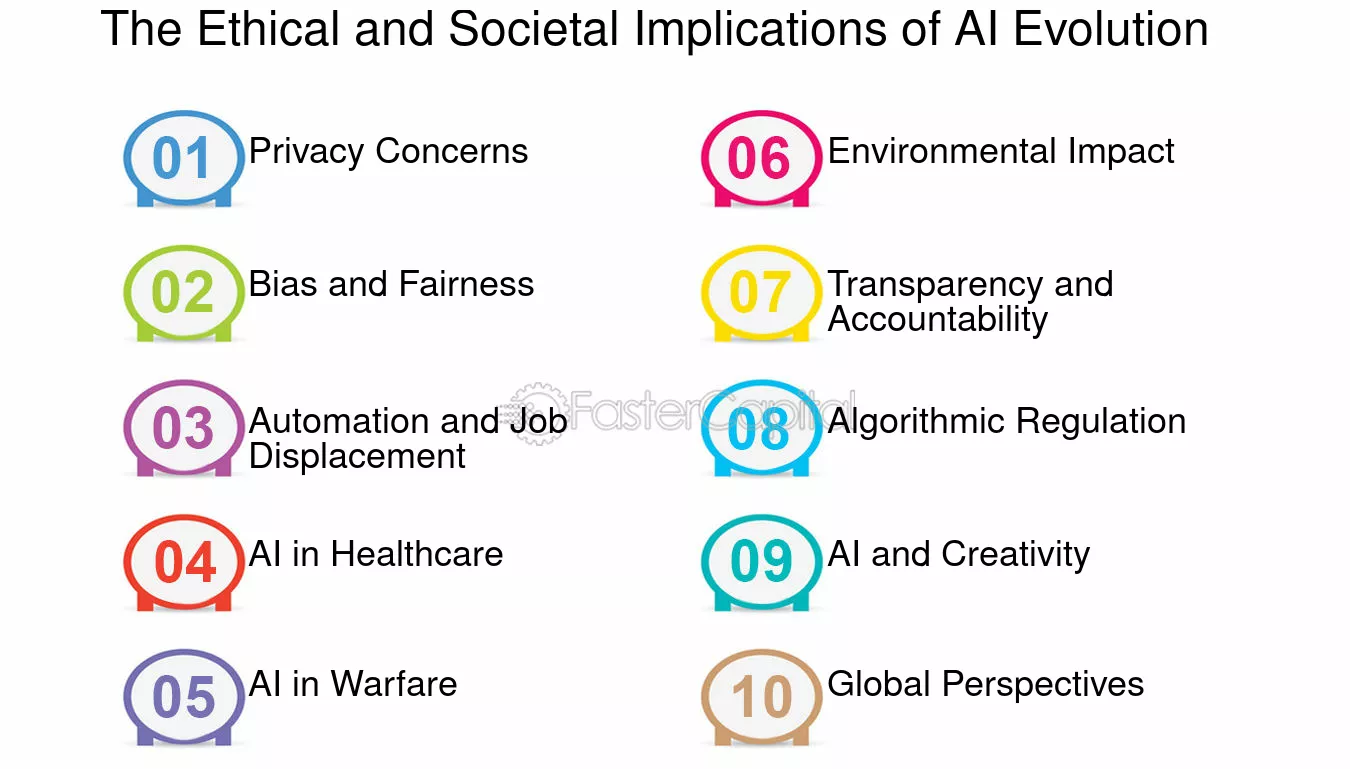
AI Bias and Fairness in Decision-Making
The issue of bias in AI systems has gained significant attention, as these technologies become integrated into decision-making processes across various sectors. Here are critical aspects to understand regarding AI bias and fairness:
- Root Causes of Bias:
- Data bias can stem from non-representative datasets where certain demographic groups are underrepresented. Consequently, models trained on these datasets may fail to generalize effectively across populations.
- Algorithmic design choices could also amplify bias, leading to unintended consequences in decision outcomes.
- Types of Fairness:
- Various definitions of fairness in AI include demographic parity, where outcomes are equal across groups; equalized odds, which ensures that predictive accuracy is consistent among groups; and individual fairness, which requires similar treatment for similar individuals.
- Developers must navigate these trade-offs when building AI systems, as strict adherence to fairness constraints can impact overall model performance.
- Strategies for Mitigating Bias:
- Incorporating diverse datasets is essential for enhancing fairness. Continuous monitoring and evaluation can identify biases in model predictions, providing opportunities for refinement.
- Engage stakeholders from diverse backgrounds in the development process to ensure an inclusive approach to AI design and implementation.
- Building Trust:
- Transparency in AI processes fosters public confidence. Clearly communicating how algorithms function and the data sources used can demystify AI’s decision-making mechanisms.
- Policy Implications:
- Regulatory frameworks that address bias and fairness in AI must be implemented. Such frameworks can set standards for accountability and systematically address disparities arising from AI use.
AI’s potential in decision-making is vast, yet attention to bias and fairness remains crucial in ensuring equitable outcomes across sectors.
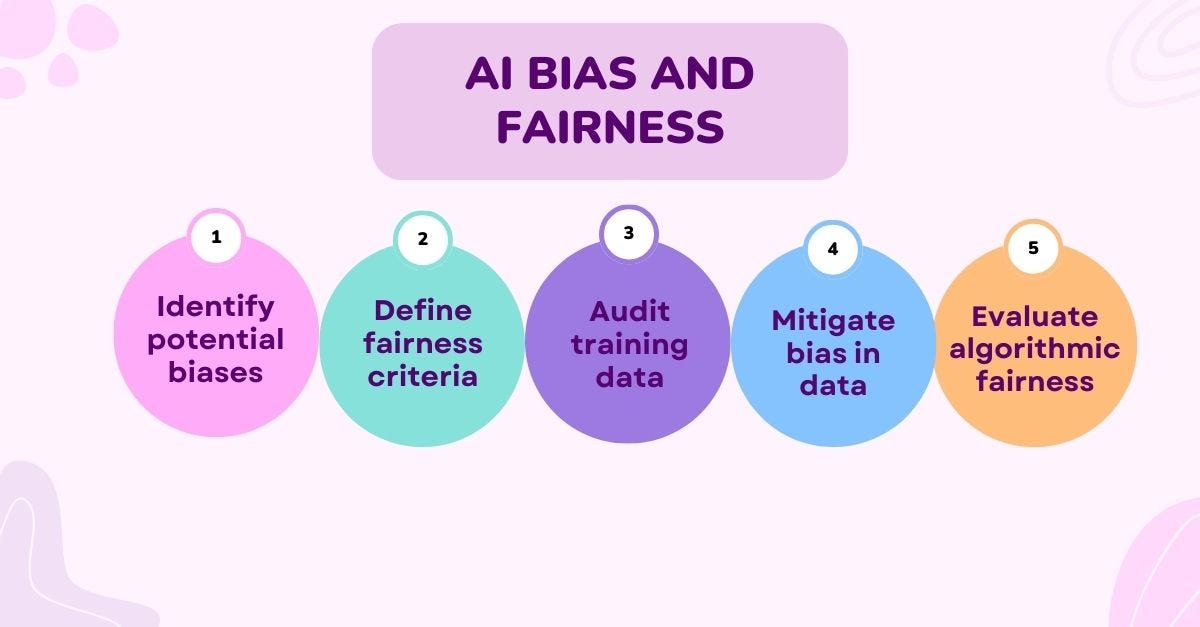
Privacy Concerns in AI Data Collection
The collection and use of personal data in AI systems raise significant privacy concerns that require careful consideration. Here are critical points regarding privacy in AI:
- Extent of Data Collection:
- AI systems require vast amounts of data for training, necessitating the collection of user information, which may include sensitive data related to health, finance, and personal behavior.
- Without clear guidelines, organizations risk mishandling sensitive data, leading to potential breaches of privacy.
- Informed Consent:
- Many users may be unaware of how their data will be used in AI algorithms. Ensuring informed consent before data collection is vital for ethical AI practices.
- Organizations must transparently communicate their data usage policies, allowing individuals to make informed decisions about sharing their information.
- Surveillance and Control:
- AI’s deployment in surveillance systems raises questions about individual privacy. Technologies such as face recognition can lead to invasive monitoring without consent.
- Legislative frameworks must address the implications of surveillance and strive to balance security measures with individual rights.
- Data Security:
- Ensuring robust data security measures is critical for protecting user information. Organizations must implement encryption, access controls, and regular audits to safeguard against breaches.
- Establishing data retention policies can further minimize risks by limiting how long sensitive information is stored.
- Public Awareness:
- An informed public is essential for navigating privacy concerns. Education campaigns regarding AI data practices can help foster understanding and empower individuals to advocate for their privacy rights.
Addressing privacy concerns in AI data collection is fundamental to ensuring ethical governance and maintaining public trust in the technology.

The Potential Impact of AI on Jobs and Employment
The integration of AI technologies into various sectors has profound implications for the workforce, influencing job opportunities and employment dynamics. Here are significant aspects of AI’s impact on jobs:
- Job Displacement:
- Automation driven by AI threatens various roles, especially those involving repetitive tasks. Studies estimate that millions of jobs could be at risk of displacement, particularly in low-skilled sectors.
- Data entry, customer service, and even certain managerial roles may see significant reductions as AI technologies become increasingly capable.
- Job Transformation:
- While AI may displace certain roles, it also creates new opportunities. The rise of AI necessitates the development of new skills and expertise, resulting in jobs that require understanding AI and data analytics.
- Many roles will evolve, with human workers collaborating with AI technologies to enhance productivity and decision-making.
- Skills Gap:
- The rapid pace of AI development has resulted in a skills gap, with many workers unprepared for the new demands of the job market. Addressing this gap requires targeted training and education initiatives.
- Reskilling and upskilling efforts are crucial to equip the workforce with relevant skills compatible with an AI-driven economy.
- Economic Disparity:
- AI’s impact may exacerbate economic inequality, as job displacement affects lower-skilled workers disproportionately. The benefits of AI-driven productivity improvements often accrue to those who own the technology, creating disparities in wealth.
- Policymakers must consider strategies that address economic inequality, such as universal basic income and job transition initiatives.
- Collaboration Over Competition:
- Future workplaces may see a shift toward collaboration between humans and AI, with machines handling mundane tasks while humans focus on complex decision-making and creative problem-solving.
- Emphasizing complementary skills where humans excel in empathy, creativity, and complex decision-making will be vital in fostering productive human-machine collaboration.
As AI continues to evolve, proactive measures are essential for mitigating potential negative consequences while maximizing the transformative benefits of AI on the workforce.
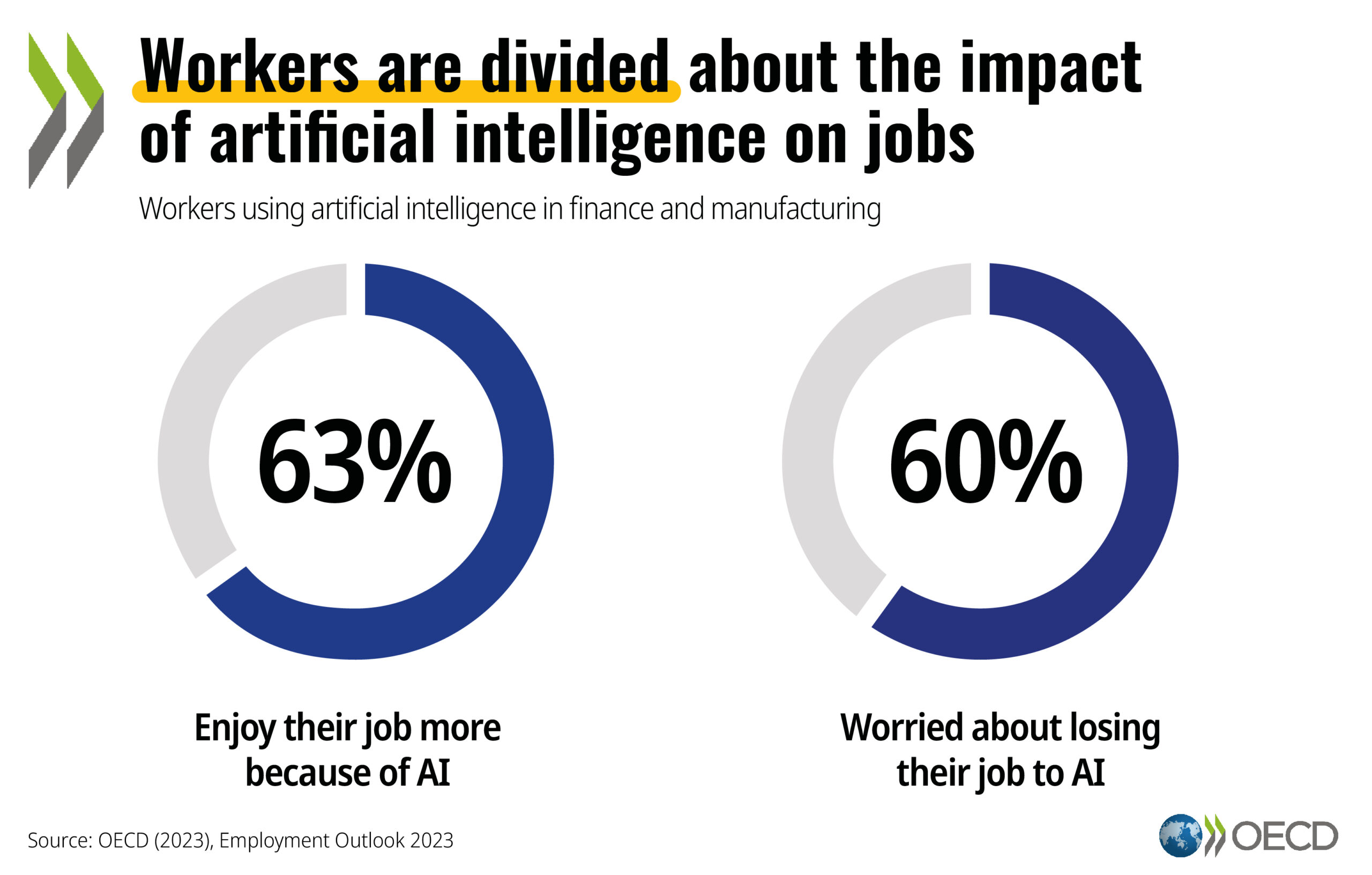
AI and Misinformation – The Dangers of Deepfakes
The rise of AI technologies, particularly through generative adversarial networks (GANs), has led to the emergence of deepfakes manipulated media that create realistic yet fabricated videos, audio, or images. The implications of deepfakes for society are profound and concerning:
- Misinformation and Trust Erosion:
- Deepfakes can distort reality by fabricating content that misrepresents individuals, including public figures. This can lead to misinformation, especially during political campaigns, undermining trust in media and institutions.
- The ability to create convincing yet fake content poses significant threats to informed public discourse, creating confusion and eroding trust in legitimate news sources.
- Public Health Risks:
- Deepfakes can amplify health-related misinformation, showcasing trusted personalities endorsing unsafe practices or products. Such misinformation can directly harm public health and safety.
- The manipulation of public perception concerning health matters necessitates robust detection measures and public awareness initiatives to combat misinformation.
- Privacy Violations:
- Deepfake technology raises privacy concerns when individuals’ identities are exploited without consent. Fabricated videos or audio could be misused to damage reputations or create harmful scenarios without the knowledge of those depicted.
- Regulatory Frameworks:
- A lack of regulation surrounding deepfake technology creates a landscape where malicious actors can exploit these tools for personal gain. Establishing legal frameworks is crucial for addressing misuse and protecting individual rights.
- Regulatory measures could encompass requirements for transparency in media production and stringent penalties for malicious uses of deepfake technologies.
- Education and Digital Literacy:
- Tackling the dangers of deepfakes necessitates public education on digital literacy, empowering individuals to discern real content from manipulated media. Teaching critical thinking skills is vital for navigating a landscape increasingly populated by AI-generated misinformation.
- Engaging in public discourse about the implications of deepfakes can help foster resilience against manipulative practices.
While deepfakes represent a remarkable technological achievement, their potential for misuse underscores the urgency for proactive measures in ensuring transparency, accountability, and public awareness.

Frequently Asked Questions (FAQs)
- What is Artificial Intelligence (AI)?
- AI refers to the capability of machines to perform tasks that typically require human intelligence, such as learning, reasoning, and problem-solving.
- How is AI different from traditional computer programs?
- Unlike traditional programs that rely on predefined rules, AI can learn from data and adapt its performance based on experience.
- What are the types of AI?
- AI is categorized into Weak AI (Narrow AI) that specializes in specific tasks, and Strong AI (General AI) that aims to replicate human cognitive abilities.
- How is AI used in healthcare?
- AI enhances healthcare through improved diagnostics, personalized medicine, and faster drug discovery by analyzing vast amounts of medical data.
- What ethical concerns are associated with AI?
- Ethical issues include AI bias, privacy concerns regarding data collection, and the potential impact of AI on jobs and employment.
Key Takeaways
AI encompasses various technologies designed to mimic human intelligence, including machine learning and natural language processing.
Narrow AI specializes in specific tasks, while Strong AI aims for broader cognitive functions but remains largely theoretical.
AI has transformative applications in healthcare, finance, education, and autonomous vehicles, among others.
Ethical considerations, such as bias, privacy concerns, and misinformation, require proactive measures in AI governance.
Education and public awareness are vital for navigating AI’s implications and ensuring responsible use of AI technologies.
Conclusion
Artificial Intelligence has indelibly shaped modern society, becoming a pivotal force driving innovation and efficiency across various sectors. From enhanced diagnostics and personalized healthcare to smart automation reshaping business operations, the impact of AI is profound. However, with remarkable advancements come significant ethical considerations and the need for responsible governance.
As AI technologies continue to evolve, understanding the nuances of their capabilities including the distinctions between weak and strong AI, the role of machine learning, and the implications for employment is paramount. The importance of addressing AI bias, safeguarding privacy, and regulating transformative technologies cannot be overstressed, as these considerations will determine how AI shapes our future.
Moreover, fostering public awareness and education about AI’s implications will empower society to navigate the intricate landscape it presents. While the journey into an AI-driven world is filled with opportunities, it is crucial to approach it with mindfulness, integrity, and a commitment to ensuring that AI serves as a tool for enhancing human potential rather than undermining it.

